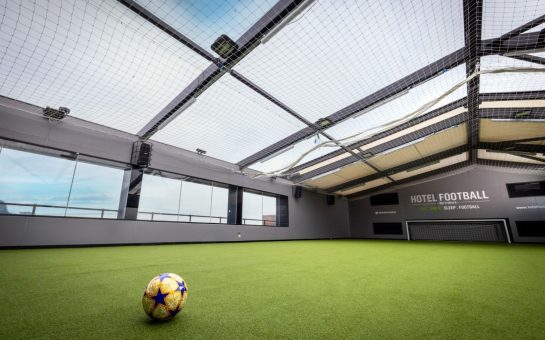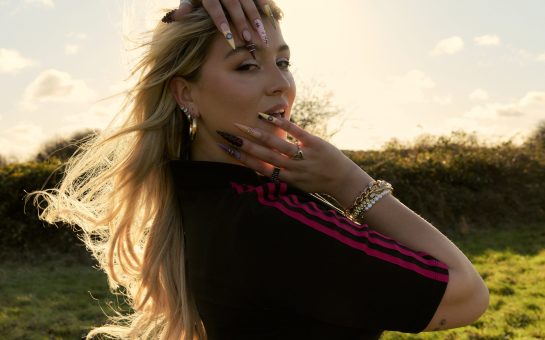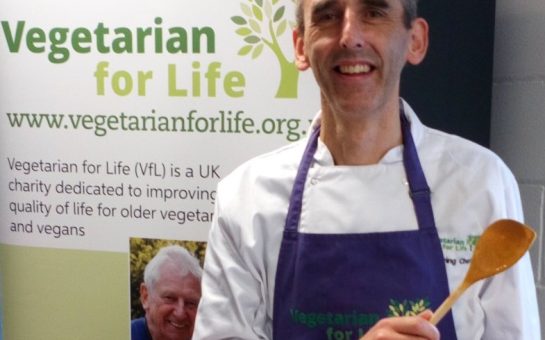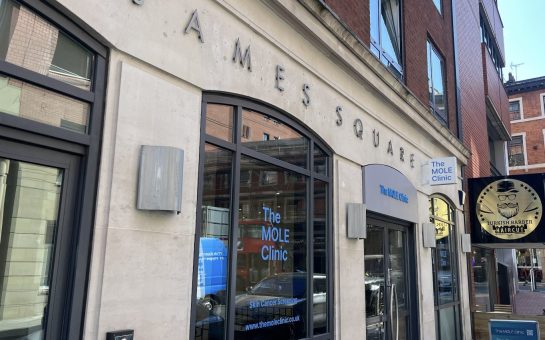A miracle. Sleeping peacefully in my arms was my brand new baby sister.
I was six years old and overwhelmed with sheer delight. A proud big sister.
Looking down at her, I noted her perfectly constructed face. She was tiny, complete with beautiful blue eyes and a tiny button nose.
Her lips parted slightly with every breath her tiny lungs exhaled. Her skin was like a blanket of silk.
Most five-year-olds would have hoped for a bike for Christmas. Others, a Barbie doll or the latest pair of super-cool roller skates. But for my tiny self, the most magical thing Father Christmas could have delivered on Christmas Eve was a baby sister.
Whilst I do not come from a particularly religious background, I was raised to believe that we pray in our hour of need, and thus, that’s exactly what I did. I prayed night after night that the man in the clouds would send me a baby sister.
Shortly after my sixth birthday, my wish was granted. Sophie had arrived unto the world.
Looking down on her angelic face, she was no different to any other brand new baby.
She laughed when she was happy, and cried when she felt hungry.
She gripped with all her might onto my fingers when they were placed in her palm. She never let go.
She crawled, she babbled, she bit when she was teething. She worked as any baby is made to work.
But Sophie has something that many babies don’t have. An additional chromosome.
Many people across the globe still live in ignorance of Down syndrome.
Tomorrow is World Down Syndrome Day, and individuals across the globe will be sporting their funkiest stripy socks in support of the occasion. Others will remain ignorant of the potential of these miraculous individuals.
In the spirit of this joyous occasion, here is a list of things that everybody should know about Down Syndrome.
Children with Down syndrome are made up of 47 chromosomes as opposed to the typical 46. This happens because there is a copy of Chromosome 21.
If anything, children who are born with this condition have something we don’t. Doesn’t that make them MORE than we are, not less?
Many people do not realise that there are actually three different variations of Down syndrome.
T21, also known as ‘non-disjunction’ is the most common. This is when all cells have an extra chromosome present.
Translocation Down Syndrome is when part of chromosome 21 becomes attached, or translocated, to another chromosome.
Children with translocation Down syndrome have the two typical copies of chromosome 21, but, they also have additional material from chromosome attached to the ‘translocated’ chromosome.
Mosaic Down Syndrome exists when only a selection of cells feature an extra chromosome, but other cells in the body are typical of those expected in people who do not have Down syndrome.
Like every other child, children with this condition love to learn. Yes, they are likely to experience some cognitive and physical delays, but they still achieve the same milestones as other children. It simply takes them a little while longer.
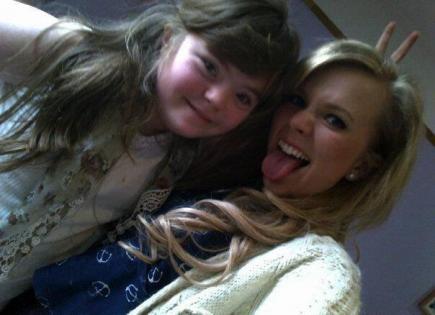
BEST FRIENDS: Lucy Varley (right) and her sister Sophie
Children with this condition can take a little longer to accomplish certain things. The processes of learning to crawl, and then to walk, can be more laborious for them.
But these children are persistent, they are strenuous. Even though they may experience difficulties, they are strong and they never give up.
One of the most prominent challenges for children with this condition is overcoming the hardships of low muscle tone, which can affect speech, gross motor skills and fine motor skills. Often, speech and physical therapy are sought by parents of children with the condition.
Adults with Down syndrome should never be regarded as ‘perpetual children’. They are adults who subsequently have Down syndrome.
Many adults with the condition seek further education, and even attend colleges and universities. Others pursue employment, and often get married.
Contrary to popular belief, adults with this condition do not live at home with their parents forever; many of them live independently and thrive on their freedom.
Down syndrome is not an illness or disease, as it cannot be passed from one person to the next.
It is simply a part of a person’s unique genetic makeup, just like their eye colour.
People do not ‘suffer’ from Down syndrome.
In fact, in a study conducted by Brian Skotko, 99% of adults who have Down syndrome stated that they were ‘happy and content’ with their lives.
Down syndrome does not, and should never define a person. Nobody should introduce a child with the condition as “this is Lucy, she has Down syndrome”. Who cares?
Lucy is an individual who has feelings, who flourishes on life and loves to learn.
So what if she happens to have Down syndrome? I have asthma and I don’t expect to be introduced as the girl who struggles to breathe every now and again.
Many people stereotype children and adults with the condition as always being happy.
This is certainly not the case.
Granted, they do appreciate the smaller things in life far more than we do. But, they experience the same emotions as everybody else.
Sophie will apologise when she feels guilty, cry when she is sad, slouch when she has had a bad day and laugh when she is happy. She can also be terribly hormonal, like other girls her age.
Children with Down syndrome behave as they have been brought up to do so.
Whilst children with this condition can often fall into habits (a common and accurate stereotype of the condition), they do recognise expectations.
The moment they do something naughty, they are fully aware of how their parents are going to react.
They have morals, they can distinguish good behaviour from bad behaviour, they are loyal and they also have an active conscience.
Before it was recognised that Down syndrome was in fact caused by the presence of an extra chromosome, doctors diagnosed the condition based on simple differences in the appearance of a child born with the condition.
Some of these differences are:
– Smaller, almond-shaped eyes, which can often feature small folds of skin known as Epicanthal Folds on the inner corners of the eyes.
-Brushfield spots are often present on the outer-section of the Iris {which I think happens to be very beautiful}.
-The bridge of the nose on a child with Down syndrome is generally smaller, which can give the face a ‘flatter’ appearance, whilst the ‘button nose’ remains truly adorable.
-Slightly smaller than average ears are common, which are often folded over slightly at the top.
-Weaker muscles in the mouth and tongue (due to the low muscle tone) which can often lead to the appearance of a ‘frown’.
-Shorter, stubbier fingers are common. Children with this condition can often have a singular crease in their palm known as the Transverse Palmar crease.
-A significant gap between the big toe and the other toes.
Whilst some children with this condition can possess more physical traits than others, this is by no means an implication that they are any less cognitively developed.
A child’s image is not a reflection of their physical or cognitive capabilities.
There is no such thing as being ‘a good case of Downs’, a child either has Down syndrome or they don’t.
We live in a day and age where equality and diversity are celebrated. Different really is beautiful, and children with Down syndrome are some of the most wonderful people you could hope to befriend.
They can be thoughtful, insightful, optimistic, and extremely interesting to have a conversation with.
They can be caring and loyal and therefore make friends for a lifetime.
They can be full of ambition and, like us, they can have hopes and dreams and aspire to make a difference to the world.
So, before you judge a person based on their condition, bear in mind the wonderful person they could be inside.
I will be wearing my funky socks tomorrow…will you?
